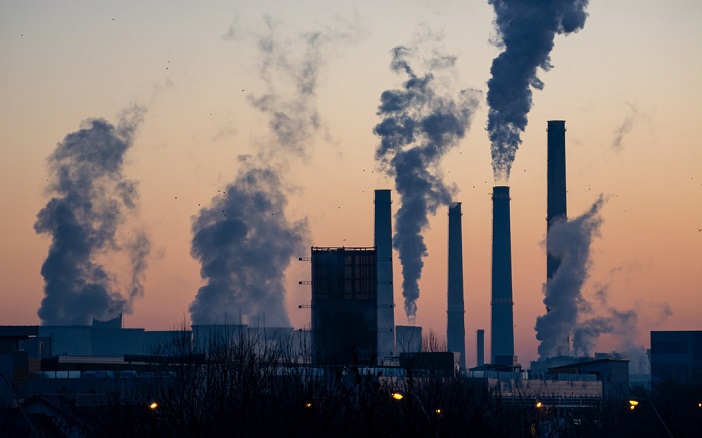
BY SOLOMON DIBABA
Despite their global prowess and scientific knowledge and intelligence regarding the global menace of climate change, the big powers of the world have chosen to sit on the fence when their own countries are in grave dangers. They have almost forgotten their 100 billion USD they have pledged to support the less developed countries in their fight against climate change. Europe is facing the worst drought in the continent in 500 years. One third of Pakistan is being flooded. The US is grappling with storms in Florida and the adjacent states. Somalia is facing the worst drought ever. The worst part of the story is while politicians in the rich countries are busy with power politics while the very survival of their countries is at stake.
The issues of power rivalry among the big powers have gained greater prominence over the devastating effects of climate change. This is abnormal and extremely dangerous trend. The big powers are busy with other political issues and had shunned the urgent danger of climate change.
Deliberate negligence of hard scientific facts related to global warming and the urgent warnings from scientists the world over, world leaders are not heeding as if they have another planet to which they can transfer their zeal for global power rivalry. It is therefore not without reason that the UN Secretary General Antonio Gutierrez has recently delivered a stark warning on the issue of climate change and the foot dragging stance of the rich countries who are not up to their pledges.
The world is facing a global double jeopardy under the back drop of the threat from nuclear war. Many countries of the world, including the so called developed countries have still not fully recuperated from the aftermath of COVID-19 pandemic.
Ethiopia is one of the 20 vulnerable countries seriously affected by climate change and the leadership of the country was well aware of the situation back in 2011 by coming up with A Climate Change Resilient Green Economy and Strategy which has set the cornerstone for the sustainable and carbon free economic development of the country. Why did Ethiopia choose this development policy and strategy for its national development program?
Some years have elapsed since Ethiopia has recognized the need to link development with environmental concerns. In 2011 the country launched a Climate Resilient Green Economy (CRGE) which charted out the foundation for integrated planning on climate-resilient green development in which Ethiopia aims to achieve middle-income status by 2025.
Ethiopia has found out that it cannot follow the old strategy of the pervious regimes nor can it directly copy from the conventional development policies that the so called developed countries had followed. This has already resulted in a sharp increase in greenhouse gas emissions and unreliable way of using the natural resources of the country. As a result of the recurrent drought and El-Nino/ La-Nina induced climate change, the nation had to subsequently grapple with a chaotic climate change situation which adversely affected the nation’s development programs over more than four decades.
Ethiopia’s economy is based on agriculture which is climate sensitive and is vulnerable to the slightest fluctuation of climatic conditions. It was therefore natural for Ethiopia to look for a sustained policy and strategy which would rescue the nation from the vicious circle of poverty. The merit of Ethiopia’s CRGE strategy lies in the fact that it focuses on the use of the abundant natural resource endowments of the country.
Following the conventional development path has only, resulted in a sharp increases in greenhouse gas emissions and unsustainable use of natural resources. The recurrent change of climate in Ethiopia forced the country revisit some of its most intractable problems so that the challenge faced positions Ethiopia at the forefront of the low carbon revolution promised by the climate agenda.
For Ethiopia the issue of tackling climate change in an integrated manner is not just a programmatic undertaking but a matter of survival for the nation. Prior to 1991, the nation’s forest coverage was estimated only at 4 percent. Over the last two decades however, the country’s forest coverage had grown to about 15 percent.
Apart from forest resources, For instance, the country has 12 river basin systems that it can use to generate carbon free and renewable energy resources. The nation has considerable geothermal (7,000 MW) and wind resources (1,350GW) yet to be exploited. The solar energy resources of the country (2.199 million TWh/ annum) have so far not been touched. The diversity and the natural basis of the country’s renewable energy resources provides Ethiopia with a comparative advantage of access to cheaper, clean and sustained energy sources.
In 2014, Ethiopia developed a country strategy document for reducing emissions from deforestation and forest degradation (REDD +). This was a comprehensive strategy “which will be implemented within Ethiopia’s CRGE Strategy framework that sets out that by 2025, Ethiopia will become a middle-income country, resilient to climate change impacts and with a zero net increase in greenhouse gas (GHG) emissions over 2010 levels. REDD+ contributes to the achievement of the CRGE targets through improved management of forests and agricultural areas.”(National REDD+ Strategy, 2014).With an estimated emissions reduction or carbon removals of 130 million tCO2e annually, 50% of GHG emissions between 2010 and 2030 will happen as a result of implementing REDD+ process.
Embedded within the Green Growth strategy REDD+ is one of the four selected fast-track programs to support ambitions set in the forestry, energy and other land use sectors. Ethiopia considers REDD+ as an opportunity and viable source of sustainable finance for investment in sustainable forest management, forest conservation, and forest restoration to enhance multiple benefits of forests, including but not limited to biodiversity conservation, watershed management, increased resilience to climate change, improved livelihoods and reduced poverty.
The Government of Ethiopia submitted its REDD+ Readiness Preparation Idea Note (RPIN) to the World Bank-FCPF in 2008 which was successively approved in 2009, creating the way for the development of the Readiness Preparation Proposal (R-PP) from 2010 to 2012.
The FCPF Participants Committee decided to allocate grant funding of US $3.4 million in March 2011 through its Resolution PC/8/2011/4, based on Ethiopia’s submission of its R-PP. Ethiopia’s request was approved by the FCPF (Forest Carbon Partnership Facility) Participants Committee in February 2012 as per the Resolution PC/Electronic/2012/.
While these programs were going on, in 2019 Ethiopia embarked on a massive intuitive by Prime Minister Abiy Ahmed entitled “National Green Legacy Intative” in which 25 billion trees most of which are indigenous ones and fruit trees were planted all over the country. Despite her vulnerability to climate change and limited resources to curb it, the country relied upon its own resources and citizens to make the country the first in tree planting across the globe. In 2022, apart from planting billions of trees, the country managed to complete the third round of filling GERD and generated 750MW of hydroelectric power from two units.
The other important initiative launched by Prime Minister Abiy Ahmed is what is called GebetaLehager.This is a fundraising initiative to finance three ultra-modern eco-tourism projects at Gorgora on Lake Tana, Koyisha in southern Ethiopia and Lake Wonchi area in Western Shoa Zone of Oromia. The significance of these three projects lies in the fact that they are not only contributing to the development of tourism industry in the country but also useful in arresting huge carbon emission cross the country.
It is to be stressed that the finance for all the above mentioned project comes from national resources and revenue generated from various sectors in the country. Ethiopia cannot afford to wait on donor agencies or the advanced countries to support these projects which will certainly contribute to massive reduction of the effects of climate change.
The entire program of curbing the effects of climate change in Ethiopia is conducted in the most participatory manner in which millions of Ethiopians and thousands of institutions, private and public owned companies have continued to contribute their share. On the other hand, these programs are conducted as a major means of employment for the youth.
As Ethiopia’s vulnerability to climate change has become obvious, planting seedlings every year has become a regular national practice. However, lack of coordination and strategy on how to retain and develop the planted forest seedlings has become a shortfall that needs to be addressed on time. This is obvious because the rate of deforestation has always outpaced the intensity and level of afforestation programs.
The greening program underway in Ethiopia is also linked to the efforts that are being made to promote food security in the country but property utilizing forest resources both for income generation and acquisition of food.
The western countries are now heavily busy in involving into the internal affairs of the developing countries to expand their sphere of influence with no regard to the effects of climate change from which these countries are suffering. It is interesting to observe that every development issue raised by the developing countries is being assesses through the perspectives of the national interests of these countries.
While the less developed countries have not contributed to the negative effects of climate change, they are being forced to face these climatic effects with no meaningful support from the rich countries. Years have elapsed since the declaration of the 100 billion USD pledge but to date the promises have failed to materialize.
Despite the multifaceted challenges the country is forced to face, Ethiopia will continue to contribute her part in keeping at bay the effects of climate change.
The Ethiopian Herald 9 October 2022




